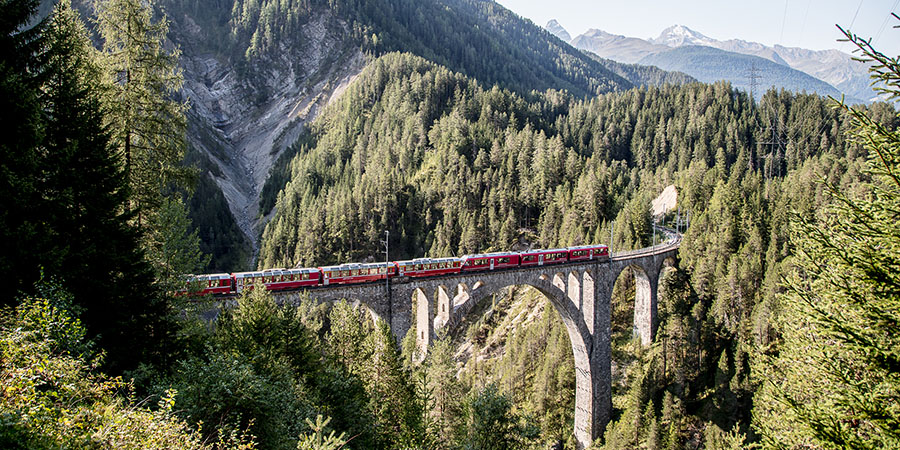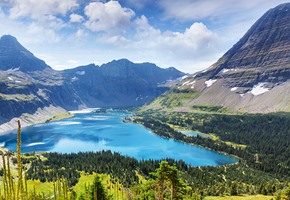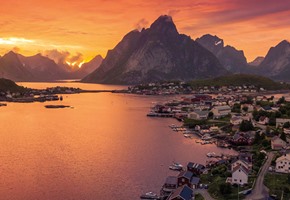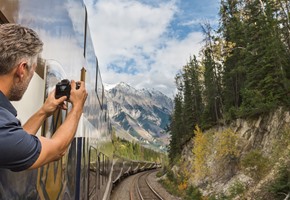In a time when global warming is a growing concern, sustainable tourism has grown from a niche travel sector to an evolving movement that regards local cultures, the health of people in the region, the environment and the world as a whole. More and more, travel companies are considering the impact of their carbon footprint and making positive changes. Airlines are turning to more efficient plane designs and committing to burning less jet fuel. Cities around the country are testing electric mass transit buses as an alternative to those powered by diesel fuel. Trains, however, remain at the top of the list of sustainable travel options, making them the ideal mode of transportation for the eco-conscious traveler.
Aside from walking and biking, there are no transportation methods with a smaller carbon footprint than the railway. Even electric cars produce 13 times more carbon dioxide emissions than trains. Airlines are perhaps the most toxic to the environment, with domestic flights creating 133 grams of CO2 per passenger per kilometer traveled and long-haul flights, such as those that cross international borders, emitting 102 grams per person per kilometer. In contrast, your typical train produces just 41 grams for each traveler per kilometer. Making the simple switch from plane to train for your next vacation could lower your environmental impact by as much as 84 percent! Railways worldwide are making even more changes in response to these studies, creating an even smaller effect on the people and places they serve. For example:
● In Switzerland, the Schweizerische
Bundesbahnen (SBB) operates its trains with 90 percent hydropower,
and the Rhaetian Railway is at 100 percent. Additionally, the SBB
has promised to cut train CO2 emissions per mile by 50 percent
through 2025 and to replace all damaged or outdated train platforms
with up to 80 percent recycled materials.
● In Canada, Rocky Mountaineer has committed to
improving its surroundings by planting trees in British Columbia on
its workers' employment anniversaries and diverting 90 percent of
its onboard waste from landfills by utilizing onboard recycling
programs. Further, the train line is exploring alternative fuel
sources to reduce its carbon emissions even more in the
future.
● Throughout Western Europe, Eurostar has long been the leader in
sustainable travel, emitting a mere 6 grams of carbon dioxide per
traveler per kilometer. In addition to maintaining this stellar
reputation in the sustainable tourism community, the company is
constantly looking to improve its standing by ensuring the trains
are transporting passengers as efficiently as possible and
carefully monitoring the CO2 emissions of their trains, depots,
stations and offices. State-of-the-art train cars and onboard water
recycling are other ways Eurostar exceeds expectations for the
eco-conscious traveler.
● Across America, Amtrak utilizes various methodologies to ensure
its train carbon emissions are as little as possible. Initiatives
include using electric trains in the Northeast corridor, reducing
idling time for all locomotives and replacing outdated train cars
with lighter, more efficient trains that use less fuel and have
lower pollutant emissions. Onboard paper products and leftover
building materials are recycled to keep them out of
landfills.
● In Japan, the
Shinkansen has redesigned its bullet train cars in recent years to
be more aerodynamic and, therefore, reduce drag and fuel
consumption. Creating efficient schedules that transport as many
passengers as possible - up to 1 million people per day - reduces
unnecessary fuel usage further.
Whether through smaller steps, like maximizing route efficiency and reducing idling, or via large-scale efforts, such as replacing train fuel with alternative fuels or electricity, railways are doing their part to preserve the Earth's fragile ecosystems. And it is easy to do your part, as well. By choosing a train tour package from Vacations By Rail, you have the ability to travel more sustainably. Our trips often utilize popular trains, such as those listed above, that prioritize the environment and strive to create excellent experiences for the people who ride the train and those who live in its proximity.
Join trains that reduce noise pollution in highly populated cities and open up routes through places where roads cannot reach. Enjoy an up-close look at the changing terrain - something that is impossible when traveling by plane - alongside hundreds of fellow travelers without the infrastructure damage, smog and dangers of mass individual vehicular transit. Sustainable travel is the future; join the movement on the rails by booking your next vacation with Vacations By Rail.
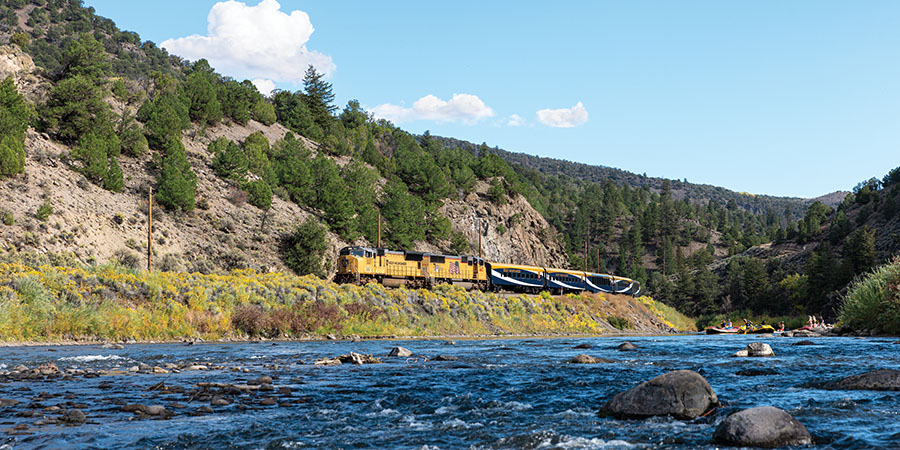
*sources:
- Electric buses:
https://uspirg.org/feature/usp/electric-buses-america
- Chart that compares different CO2 outputs and states the 84
percent fact:
https://www.visualcapitalist.com/comparing-the-carbon-footprint-of-transpor…
- Rocky Mountaineer info:
https://www.rockymountaineer.com/about-us/sustainable-tourism
- Eurostar info obtained from various boxes on this page and the
above emissions chart:
https://www.eurostar-treadlightly.com/en/environment.php
- Amtrak info:
https://media.amtrak.com/2020/07/amtrak-releases-fy2019-sustainability-repo….
- Rider numbers of the Japanese train:
https://www.japan.go.jp/_src/200153/18-21.pdf
- Japanese train shape and design:
/expert-advice-inspiration/2020/april/travel…

